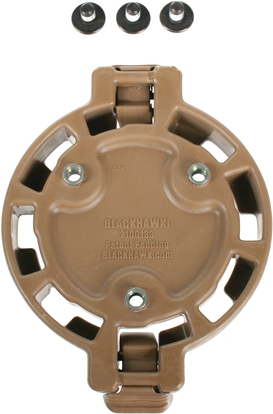Looking at the end of summer, our thoughts turn to the coming autumn—and our next fall adventure gear checklist! Prepping for seasonal change is on our minds, what can we tell you? And whether that means cleaning tactical gear or upgrading our 14er gear for fall, we’ve got a lot of options to consider. Don’t forget your bug-out bag rotation… it’s time!
END OF SUMMER GEAR PREP: WHAT TO KEEP, CLEAN, STORE, OR UPGRADE
The first step in prepping for seasonal change is to take stock of what’s in your current tactical loadout. What are the key components? Do you have specialized gear for the season? You’ll want to go through your inventory and pick out what’s going into your fall tactical loadout, what’s going into storage, and what needs to be replaced or upgraded.
It’s not always obvious at first glance. Let’s discuss a few examples:
HYDRATION SYSTEMS. A summer hike is likely to give rise to concerns about dehydration and heat exhaustion. Equipping your tactical backpack with a hydration system is a good strategy in response. The change in season doesn’t mean a change in strategy, however. An outdoor adventure in fall or winter can be every bit as demanding as one in summer. You’re gonna want that hydration system even when going on a hike in cool weather. Dehydration remains a risk as long as you’re pushing yourself on the trail for hours.
TENTS. Different types of tents are rated for different environmental conditions. For the summertime, you’re probably packing a 2 season tent. It’s lightweight and appropriate for warm weather. You could certainly pack a heavier option, but what would be the point of it? As for a fall hike, you’ll most likely want to bring a 3 season or 4 season tent. That would provide better insulation and protection against bad weather.
TACTICAL CLOTHING. Summer gear tends to focus on being lightweight and allowing good airflow. As we head into the colder seasons, the requirements for clothing change considerably. We’re looking for clothes that provide better insulation. Ultra lightweight clothes, or clothes that use a lot of mesh material can be taken out of your seasonal loadout. Your fall adventure gear checklist should switch to cold weather gear. Something with fleece or thermal layers would be good.
PREPPING FOR SEASONAL CHANGE: CLEANING TACTICAL GEAR
A period of tactical gear transition is an excellent time to evaluate your equipment and see what needs to be replaced, repaired or cleaned. If you’re performing regular gear maintenance, you should have less work on your hands. But it’s still a good idea to check everything and ensure operational readiness!
What to look out for during tactical gear cleaning and maintenance:
CLOTHING AND BAG SEAMS/STITCHING. These can trap dirt or conceal wear and tear. Examine these areas closely and look out for torn or frayed materials. Though if you’ve equipped yourself with durable tactical backpacks and such, you shouldn’t see much degradation, if any at all. In general, you can clean a bag thoroughly with a brush and a cleaning cloth, and perhaps a bit of cleaning solution. In some cases, you may have to wash the item.
ZIPPERS, BUTTONS AND SNAPS. A known vulnerability in many kinds of equipment. Sewn-in buttons are particularly prone to damage and falling off. That’s one reason we prefer zippers or snaps. Buckles are ideal for items that require flexibility in length or snugness. But they can get damaged, so examine buckles carefully and replace them if they’re showing distress. Zippers should open and close smoothly. If the zipper is sticking, try adding lubrication. If it’s no longer functioning very well, replace the zipper. Be sure to clean these parts thoroughly. Using a soft-bristle brush should do the trick. If dirt remains after cleaning tactical gear, you may have to wash the item.
MULTI-TOOL OR KNIFE. Be sure to store the manufacturer’s instructions for taking care of a tool. Consult them before you work on cleaning the item. A multi-tool may have to be taken apart before you can perform thorough maintenance. Take notes as you do so. You’ll want to know where each part goes, so you won’t have trouble putting the tool back together. Use a brush and a cloth to tackle the dirt. If there is rust, remove it using abrasive paper and wipe down the surface. Add a touch of lubrication to the mechanisms. We recommend using a Teflon-based lubricant for this. Let it dry completely, then reassemble the multi-tool.
HYDRATION SYSTEMS. Ideally, you should be cleaning these after every hiking trip. Flush out dirt and contaminants with water, then clean with a solution of water, baking soda and vinegar. You can also use cleaning tablets for this, if you prefer.

BUILD A TRANSITIONAL FALL TACTICAL LOADOUT
Nothin’ easy about making a fall adventure gear checklist. It’s a tricky time of year. Early on, the weather can be warm, but then can drop precipitously later in the season. But this is what tactical preparation is all about! You’ve gotta be resourceful and flexible. Work on end of summer gear prep with a plan for tactical gear transition or changeover.
We’ve got a few great tips on prepping for seasonal change:
PACK MORE CLOTHING LAYERS. The key to flexibility (and comfort!) is being prepared with multiple layers of tactical clothing. The base layer should always be made from a moisture-wicking material. This can be a synthetic fabric or Merino wool. The top layer needs to be waterproof or water resistant, as well as offering solid protection against wind and sun. Everything else you’re packing will count among the middle layers: additional tactical outerwear, fleece-lined tops, light jacket with good insulation.
ADD GLOVES AND HEADGEAR. Wearing or removing extra layers of clothes can be a hassle, and a bit time consuming. It’s quicker, and often just as effective, to simply pull on some gloves or cover up your head. Even if you wear light gloves as hand protection, you may want to bring something with thicker insulation, just in case. As for headwear, a simple beanie can do the trick. You can choose something more heavy-duty, if you prefer.
INCLUDE NECK AND FACE PROTECTION. Similarly, you can benefit from employing items such as neck gaiters and balaclavas. Again, these are quicker to don or doff, compared to a full layer of clothing.

REFRESH YOUR BUG-OUT BAG
Every prepper needs a bug-out bag. Well, everybody should have one, honestly. If disaster strikes and you have to get away quickly, you can grab the bag and feel confident that you’re equipped with what you need to survive out of doors. But a bug-out bag isn’t a “set and forget” proposition. You’ve got to refresh the contents on a regular basis. The end of summer gear prep period is a good time to initiate bug-out bag rotation.
Examine the bag itself, and any pouches and containers you’ve included. Check the integrity of the item—it might require repair or replacement. You might want to do some cleaning as well. Consider the nature of the contamination, if any. If the bag is showing mold, for example, you may have an issue with the storage space. Make changes as necessary.
Check the expiration dates of any food and medical supplies in your pack. Remove everything that is expired. Pack the replacements.
If your supplies include batteries, consider changing them out as well. If you’re storing any electronic devices, test them to see if they’re still working properly. After testing, if they passed, remove their batteries before storing them again.
Finally, pack everything and practice getting around with your bug-out bag. If you find it too heavy or cumbersome, you may have to trim down its contents. Or consider using a different carrying bag. That might help! The 14er gear for fall includes a handy tactical backpack that will serve nicely for this purpose.
Read the full article here








Leave a Reply